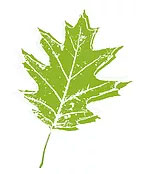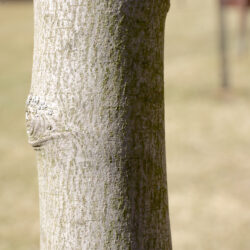Etymology
Amelanchier is the French provincial name for Amelanchier ovalis, a European plant in the same genus; canadensis is Latin for Canada.
Native Habitat
Forest understory, sunny forest edges, dappled shade, and moist streambanks.
Garden Uses
Serviceberry is effective as an understory tree in the woodland garden. It may also be used as a hedge and along forest edges.
Overview
This tree, which is often multi-stemmed, flourishes in the partial shade and rich growing conditions of a forested location. It is a spectacular four-season tree/shrub featuring showy white flowers in spring, red and blue berries in mid-summer, outstanding fall foliage, and smooth grey bark in winter.
Spread
4 - 10'
Leaves and Stems
Alternate, simple medium green leaves with serrated edges, approximately 1' wide by 3" long. The leaves turn orange to red in the fall. The gray bark will sometimes have ruddy tones.
Flowers
Nodding, pyramidal spikes of long-petaled white flowers emerge in spring before the leaves appear. The showy 5-petaled, slightly fragrant, white flowers with up to 20 stamens are in drooping clusters.
Fruit/Seed
Clusters of small green fruits develop in early summer and ripen to rich red to dark blue in mid-summer through fall. The fruits contain a few small seeds.
Wildlife Associates
Shadblow bears a “keystone species” badge: a single tree is capable of supporting a colossal amount of complete food webs, especially if surrounded by other native plants. It is a spring nectar source for bees and butterflies, and an occasional host for viceroy, striped hairstreak, and Canadian tiger swallowtail butterflies. The fruits are relished by cardinals, waxwings, hairy woodpeckers, thrushes, catbirds, orioles, and robins, as well as squirrels and chipmunks.
Propagation
This species can be rooted from early spring hardwood cuttings or softwood cutting taken in the summer. Sow untreated seeds in fall or cold-stratified seed in spring. Seeds need cold-moist stratification for 90-120 days. Transplanting seedlings from dense shade is also a viable way to propagate.
Ethnobotanical Uses
A tea made from the root bark (mixed with herbs) has been used as a tonic in the treatment of excessive menstrual bleeding and also to treat diarrhea. A bath of the bark tea was used on children with worms. An infusion of the root was used to prevent miscarriage after an injury. A compound concoction of the inner bark was used as a disinfectant wash.
Garden Location
Entry Garden (see garden map)
Anecdotal Information
About 8 species of Serviceberry can be found in Maine and they are notoriously difficult to identify to species. Shadblow is so named because it has been documented as blooming at the same time as the shad are making their way inland during their annual spawning migrations along the East Coast.
Sources
UMaine Cooperative Extension
Prairie Moon Nursery
Natural Medicinal Herbs
Plant Profile by Kathy Kling


